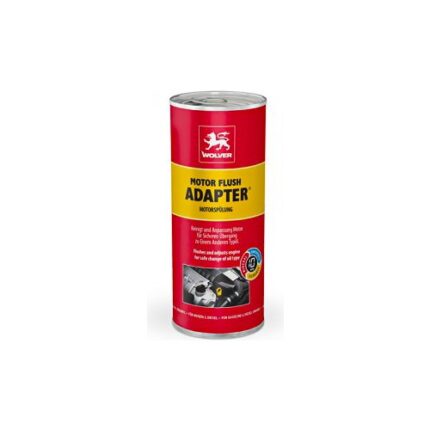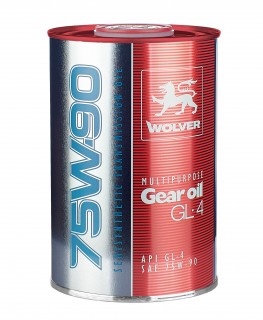-11%
Get Wolver GL-4 75W-90 Semisynthetic Transmission Oil
Semisynthetic transmission oil is a blend of mineral (conventional) base oils and synthetic base oils, offering a balance between the properties of both types. This type of oil aims to provide better performance and protection than conventional oils while being more cost-effective than fully synthetic oils. Here’s a detailed overview of semisynthetic transmission oil:
Benefits of Semisynthetic Transmission Oil:
-
1. Enhanced Lubrication
- Smooth Gear Shifts: The improved lubrication properties of semisynthetic oils ensure smoother gear transitions, reducing wear and tear on the transmission components.
- Reduced Friction: Lower friction coefficients compared to conventional oils help in minimizing the internal resistance within the transmission system, leading to more efficient operation.
2. Temperature Stability
- High-Temperature Performance: Semisynthetic oils maintain their viscosity at higher temperatures better than conventional oils, preventing the oil from thinning out and losing its protective qualities.
- Low-Temperature Fluidity: These oils remain more fluid at low temperatures, ensuring easier starts and proper lubrication during cold conditions. This helps prevent metal-to-metal contact when the transmission is first engaged in cold weather.
3. Extended Component Life
- Wear Protection: The enhanced film strength and shear stability of semisynthetic oils protect against metal-to-metal contact, significantly reducing wear on gears and other transmission parts.
- Corrosion Resistance: Additives in semisynthetic oils help protect against corrosion, keeping transmission components free from rust and other corrosive elements.
4. Oxidation Resistance
- Longer Oil Life: Semisynthetic oils resist oxidation better than conventional oils, meaning they do not degrade as quickly. This extends the interval between oil changes.
- Deposit Control: By reducing oxidation, semisynthetic oils help prevent the formation of sludge and varnish, keeping the transmission cleaner and functioning more efficiently.
5. Fuel Efficiency
- Reduced Drag: The lower friction provided by semisynthetic oils means the transmission operates more efficiently, which can translate to improved fuel economy. This is particularly beneficial in stop-and-go driving conditions where efficient power transfer is crucial.
- Enhanced Power Transfer: Efficient lubrication ensures that more of the engine’s power is effectively transmitted to the wheels, reducing energy losses.
6. Cost-Effectiveness
- Balanced Cost and Performance: Semisynthetic oils offer many of the benefits of fully synthetic oils but at a lower cost, providing a cost-effective solution for enhanced transmission performance.
- Reduced Maintenance Costs: By protecting the transmission components better and extending the oil change intervals, semisynthetic oils can help reduce overall maintenance costs over the vehicle’s lifetime.
7. Versatility
- Wide Range of Applications: Suitable for use in various types of transmissions including automatic, manual, and continuously variable transmissions (CVTs). They are also effective in a variety of driving conditions and environments, making them a versatile choice.
- Heavy-Duty Performance: Semisynthetic oils are often used in heavy-duty applications where both performance and protection are critical, such as in commercial trucks and industrial machinery.
8. Environmental Benefits
- Reduced Oil Consumption: Longer oil life means less frequent oil changes, leading to a reduction in oil consumption and less environmental waste.
- Lower Emissions: Improved transmission efficiency can contribute to lower vehicle emissions, supporting environmental sustainability goals.
Common Applications:
- Automatic Transmissions:
- Suitable for many automatic transmissions, especially in passenger cars, light trucks, and SUVs.
- Manual Transmissions:
- Can be used in manual transmissions, particularly those requiring better performance and protection than what conventional oils offer.
- Heavy-Duty Applications:
- Used in some heavy-duty vehicles and industrial applications where improved durability and protection are needed.
Considerations When Using Semisynthetic Transmission Oil:
- Compatibility:
- Always check the manufacturer’s specifications and recommendations for your vehicle or equipment. Not all transmissions are compatible with semisynthetic oils.
- Change Intervals:
- Follow the recommended oil change intervals for semisynthetic oils, as they may differ from those of conventional or fully synthetic oils.
- Mixing Oils:
- While semisynthetic oils can sometimes be mixed with conventional or synthetic oils, it’s best to consult the manufacturer’s guidelines to avoid potential issues.
- Environmental Conditions:
- Consider the operating environment. Semisynthetic oils perform well in a wide range of temperatures but may be particularly beneficial in extreme conditions.
Follow us on Facebook For more parts.



